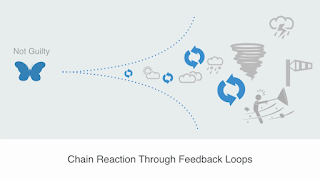Why are we behaving the way we do?
- Link ophalen
- X
- Andere apps

I’d like to tell you something about behavioural safety. As a professional trainer in our industry I developed a two-day course called BBS, Behaviour Based Safety, which in fact is a voyage into oneself. The course concentrates on self-reflection and psychology because students don’t often ask themselves why they behave in a certain, sometimes dangerous manner. Neither do they often realise that stress can lead to narrowmindedness.
Ethics is a condition for safety, because it means ‘doing the right thing.’ But what happens when someone who believes he is doing the right thing is doing it wrong? People are not flawless, they make mistakes or perceive situations differently. A good start is to understand ourselves and specifically our own brain.
Different parts of the brain have different responses to decision making. Understanding that people actually have three brains might help.
1. If the decision has to do with what is perceived as danger, the first, Reptilian brain will respond fast and instinctively.
2. If the decision has to do with relationships and emotions, the second, Mammalian brain will take more time to respond based on feelings and emotions.
3. If the decision has to do with an analytical challenge, the third, Neocortex brain weighs options and demands careful deliberation.
Reptilian Brain – Instinct (survival, breathing/swallowing/heartbeat, startle response). The brain stem is the reptilian brain. It is a remnant of our prehistoric past. The reptilian brain acts on stimulus and response. It is useful for quick decisions without thinking. It focuses on survival and takes over when you are in danger and you don’t have time to think. In a world of survival of the fittest, the reptilian brain is concerned with getting food and keeping you from becoming food. The reptilian brain is fear-driven and takes over when you feel threatened or endangered. Fear is a survival mechanism. It triggers the Fight, Flight or Freeze response: faster breathing, increased heart rate, higher blood pressure and metabolism, muscle tension, dizziness, headache, alertness, improved hearing, seeing, getting stronger, faster by stress hormones (adrenaline) (these reactions are unconscious).
Limbic System – Emotion (feelings, relationship/nurturing, images and dreams, play). The modules that lie beneath the corpus callosum are known as the limbic system. This area is older than the cortex in evolutionary terms and is also known as the Mammalian brain because it is thought to have first emerged in mammals. This part of the brain, and even that below it, is unconscious, and yet has a profound effect on our experience because it is densely connected to the conscious cortex above it and constantly feeds information upwards. The limbic stem is the root of emotions and feelings. It affects moods and bodily functions.
Neocortex – Thought (including planning, language, logic & will, awareness). The neocortex is the most evolutionary advanced part of your brain. It governs your ability to speak, think, and solve problems. The neocortex affects your creativity and your ability to learn. The neocortex makes up about 80 per cent of the brain.
This is the latest in a series of articles by Arend van Campen, founder of TankTerminalTraining. More information on the company’s activities can be found at www.tankterminaltraining.com. Those interested in responding personally can contact him directly at arendvc@tankterminaltraining.com.
- Link ophalen
- X
- Andere apps



Reacties
Een reactie posten